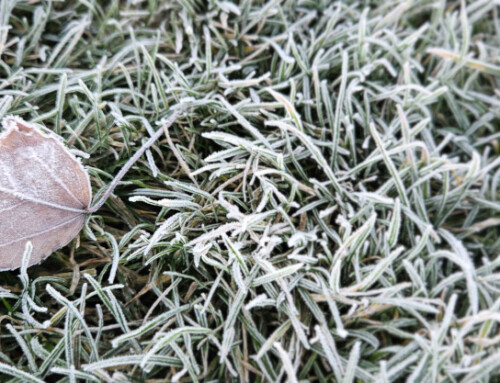By all accounts, this year’s summer weather was exceptional. A long season of warm, dry weather—punctuated by a few perfectly-timed rains—made for a great year in the garden and left many gardeners with bumper crops (tomatoes, anyone?). As we begin to close the books on another year of gardening, there are a few steps you can take now to ensure a healthy lawn and beautiful garden next spring.
First, if you have a lawn there are two final steps you should take this season to keep your grass healthy through winter and into next year. This month, as our rainy weather returns, spread a healthy dose of granular lime over your lawn to discourage moss growth. Because of our warm summer, moss wasn’t a serious problem; as fall takes hold, however, it will return.
Scientifically-speaking, lime raises the pH of soil, which in the Pacific Northwest, will bring soil to a more neutral pH. Practically-speaking, this serves two benefits: 1) discouraging moss growth, as mentioned, and; 2) improving the effectiveness of lawn fertilizer, allowing you to reduce the amount of fertilizer you need to use. When purchasing lime, choose a fast-acting version like Espoma Lightning Lime—while dolomite lime may take up to a year to break down in the soil, fast-acting lime will correct a soil’s pH in just weeks.
The second step to take this fall to keep your lawn healthy through winter is a final dose of fertilizer. Although spring and summer are the seasons you tend to pay the most attention to your lawn, winter is the season that can be the hardest on grass. To prevent damage from cool, wet conditions and hard freezes, it’s important for lawns to develop strong roots through winter. Later this month or next—essentially once your lawn slows or stops growing—apply a dose of Scotts Turf Builder Winterguard. Feeding late in autumn will give your lawn a good final “meal” before going dormant for winter and allow roots to continue to feed even after the above-ground portion of your lawn has stopped growing.
Aside from the mundane tasks of lawn care, this month is a fun time to plan for spring color, namely bulbs! While spring bulbs can be planted anytime in autumn, October is an ideal month to do so. Bulbs need the winter months to develop strong root systems and prepare for spring, so the sooner you plant after the soil begins to cool for fall the longer they’ll have to get established.
When planting bulbs, choose varieties that bloom at different times for a longer season of color. Crocuses will bring the earliest signs of spring, followed by daffodils and tulips. For stunning displays, plant bulbs in large groupings. If you like the look of blooming bulbs but don’t have the patience to watch them die down after blooming in late spring—all the while distracting from your other flowers—plant your bulbs in large pots and bury the pots. After they’re finished blooming, pull out the pots and set them somewhere out of sight to finish dying back.
For existing bulb plantings, this is also the time of year to fertilize. Keeping up with a yearly dose of bone meal will maintain strong, healthy bulbs and keep your flowers blooming each spring.







Leave A Comment